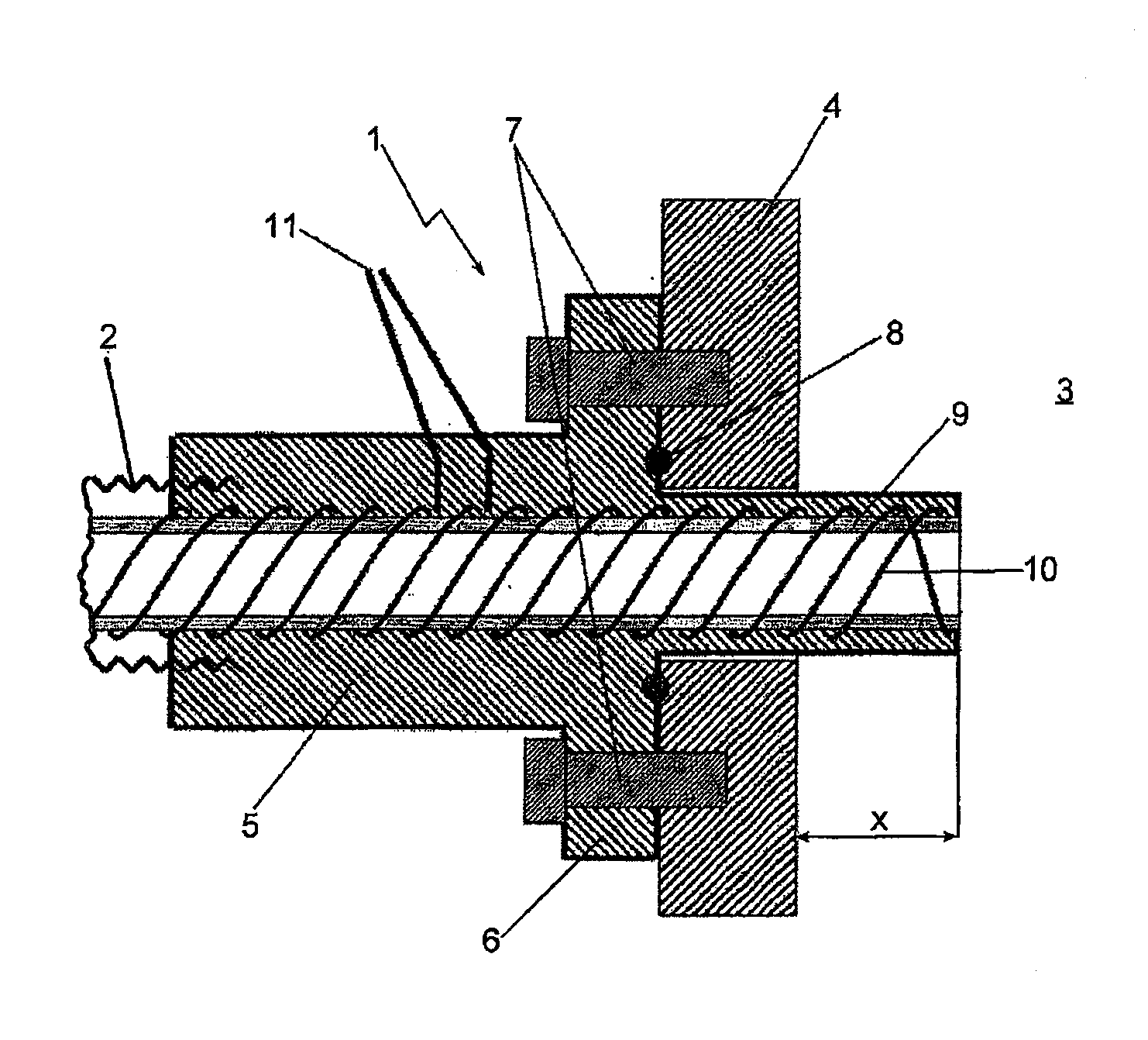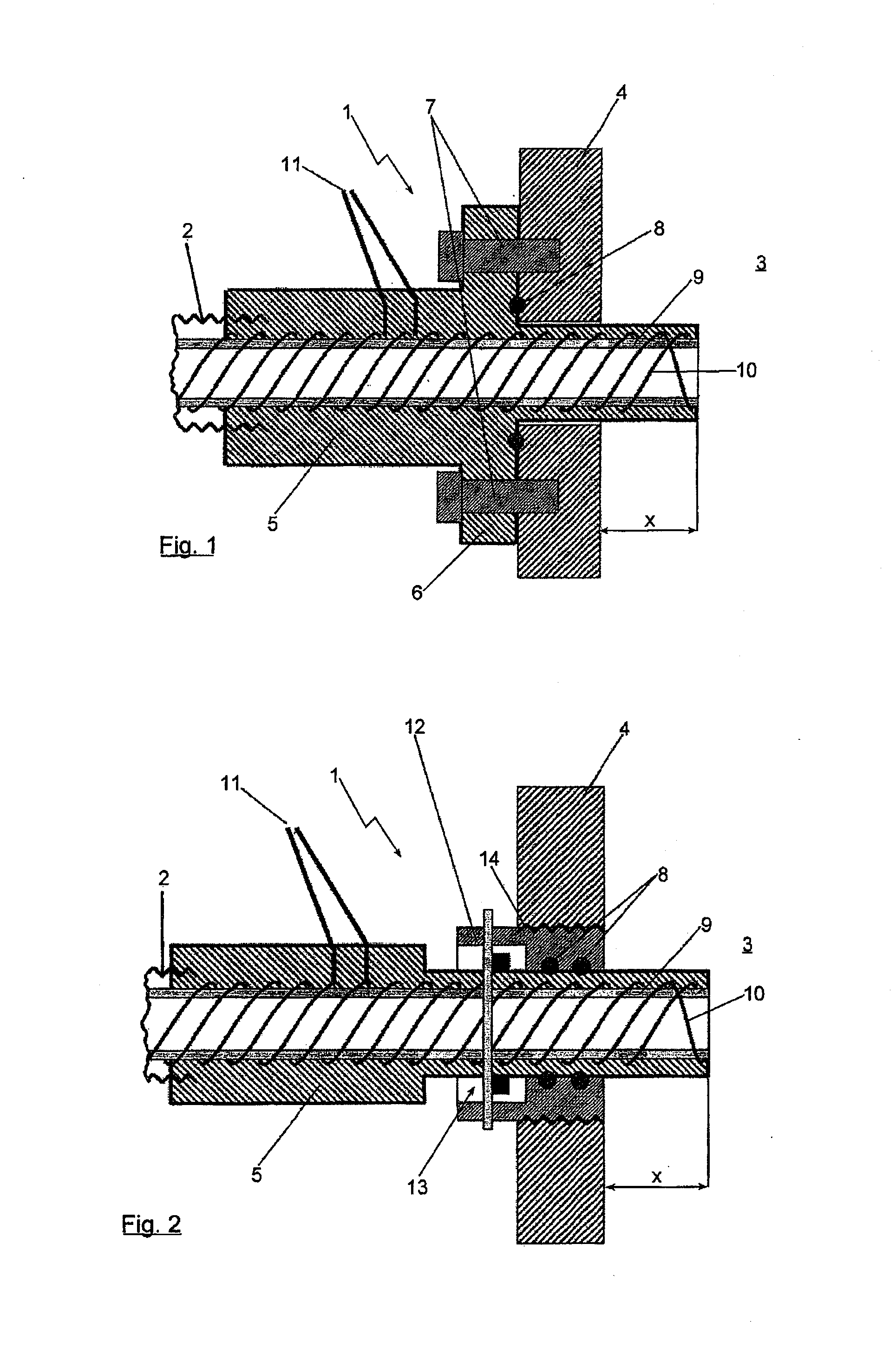Device for Connecting a Line Element to a Component
a line element and component technology, applied in the direction of manufacturing tools, electrical generators, pipe heating/cooling, etc., can solve the problems of difficult heating in the region of possible connection elements, the pipe itself can be heated, etc., and achieve the effect of convenient use, cost-effectiveness and simple structur
- Summary
- Abstract
- Description
- Claims
- Application Information
AI Technical Summary
Benefits of technology
Problems solved by technology
Method used
Image
Examples
Embodiment Construction
[0018]The device according to the invention will be described below by reference to the two figures in two possible exemplary embodiments. The structure can provide heating for example in fuel cell systems but also in all other systems, in which heated lines are connected via interfaces to components.
[0019]In the illustration of FIG. 1, a first embodiment of the device 1 according to the invention for connecting a line element 2 to a component 3 can be seen. The line element 2 is thereby shown, for example, as a section of a corrugated tube. Having regard to the component 3, whereby the reference numeral 3 denotes the inside of the component 3 here, merely a wall 4 thereof is explicitly shown in the illustration. The device 1 comprises a connection housing 5. This connection housing 5 comprises a flange 6, which is screwed via two fixing screws 7 to the wall 4 of the component 3. The connection housing 5 is thus releasably connected to the component 3. For sealing, a sealing element...
PUM
| Property | Measurement | Unit |
|---|---|---|
| length | aaaaa | aaaaa |
| electrically non-conductive | aaaaa | aaaaa |
| electrical | aaaaa | aaaaa |
Abstract
Description
Claims
Application Information
 Login to View More
Login to View More - R&D
- Intellectual Property
- Life Sciences
- Materials
- Tech Scout
- Unparalleled Data Quality
- Higher Quality Content
- 60% Fewer Hallucinations
Browse by: Latest US Patents, China's latest patents, Technical Efficacy Thesaurus, Application Domain, Technology Topic, Popular Technical Reports.
© 2025 PatSnap. All rights reserved.Legal|Privacy policy|Modern Slavery Act Transparency Statement|Sitemap|About US| Contact US: help@patsnap.com


